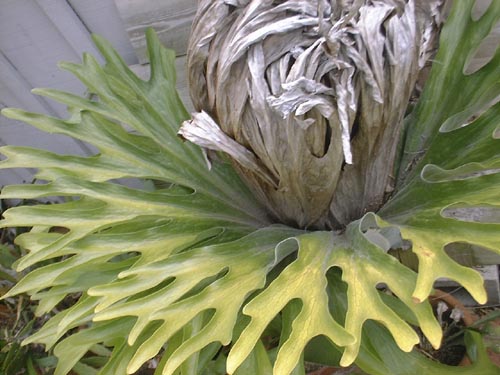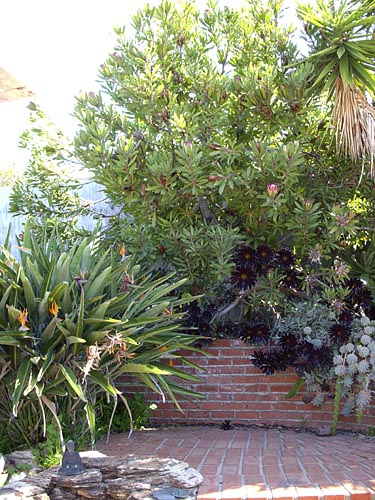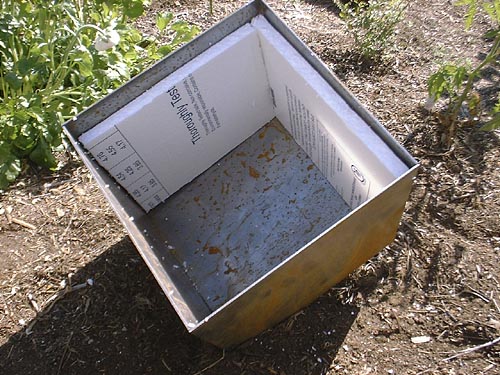The graphic at the top of this blog is based on a picture of a giant staghorn fern that I’ve been growing for the last decade or so. This is the plant:
The board it’s mounted to is four feet across, so you can get a sense for how big it is. As far as these larger staghorns go, it’s a teenager. This could easily get 50% larger over time. But even at its current size, people stop and comment.
The plant came labelled Platycerium grande, but I’m now convinced it’s actually the species superbum. (Edit April 10, 2011: Bob in a comment below wondered about which species this was, and I went off and did more research about how to tell these two species apart. The plants appear really similar at first glance. The main diagnosis is whether there are one or two of the patches with spores on the fruiting fronds. P. grande has two patches, P. superbum has one. My plant has the single area where the fronds first branch, so I’m sticking with P. superbum. Apparently superbums are commonly mislabeled grande in the horticultural trade.) As with other staghorns this species produces two kinds of fronds. Sterile, basal ones grow downward and serve to attach the plant to the trees it grows upon in nature. The more decorative fertile fronds grow up and out into the wild forms that earn these plants their “staghorn” name. These latter fronds can divide themselves into upright structures that do not bear spores, and lower ones that do.
Some resources like Staghorn Ferns at a Glance call this a “difficult” species, though that hasn’t been my experience in Southern California, maybe because excessive rains aren’t a problem. For a fern the plant doesn’t seem to care for huge amounts of water. A shot of water once a week or so keeps it happy. It lives on the north-facing side of a fence, so it get only small amounts of direct sunlight. The garden has seen some light frost over the years, and the plant stays outdoors through it all.

A view of the staghorn from the top
Probably the trickiest part of dealing with the plant is moving it around and “repotting” it. The original plant came attached to a board that was about a foot square. As the plant grew I screwed the original board to boards of rot-resistant cedar, secured from behind to pieces going 90 degrees from the main support boards. That first change of supports was to one two feet square. When the plant outgrew it I attached that second support to the current support. To reduce the bulk of the previous support I carefully removed the backing boards that held the planks on the front face together. The fern had attached itself to the boards in the meantime, so it held the boards in place until I attached them to the new support.
Some growers attach sphagnum moss onto the boards where the fern will expand, but the last time I skipped that step and the plant has been happy enough with that decision. As the fronds die and are replaced with new ones, the old fronds decompose slowly, providing an area where moisture and nutrients can gather.















